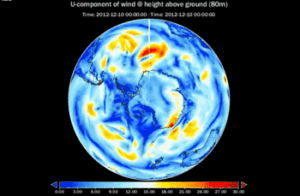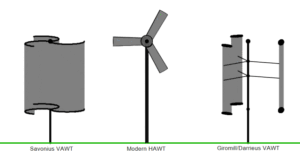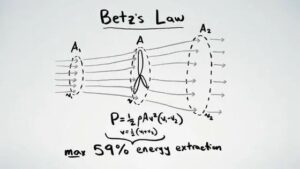Did you know?
The energy generated by wind on Earth every 24 hours is approximately 35 times the total daily electricity consumption of all humankind.
Unlike fossil fuels such as coal and oil
wind replenishes itself every day.
Could we create a world that runs entirely on wind energy?

The basic principle of wind power generation is actually quite simple.
Blades mounted on the rotor hub capture the wind’s force and convert its kinetic energy into rotational energy.
Traditional windmills use this rotational energy for grinding grain or pumping water.
In modern wind turbines, rotation drives a generator to produce electricity.
This energy conversion process in the 19th century when inventors created the earliest wind-powered generators.
There are three factors that determine the amount of power a wind turbine can generate: the size and orientation of the blades.
The size and orientation of the blades
the aerodynamic design of the blades
amount of air that is blown by the rotating rotor.

First, let’s talk about the direction of the blades.
Engineers can design the rotor of a wind turbine to be either vertical or horizontal.
Vertical-axis blades can capture wind from any direction, but their efficiency is much lower than that of horizontal rotors.
>A horizontal design allows the turbine to harness the full energy of the wind, as long as it can detect the wind direction and adjust itself accordingly.
>This adjustment process is known as “yawing.”
>Old-fashioned windmills relied on manual monitoring to achieve this,
whereas today’s sensors and computers automatically fine-tune the blade angles to capture as much energy as possible.
On the outer edge of the rotor, the blades need to maintain a slender shape to maximize efficiency.
>Early blades had a flat design, while modern blades feature an aerodynamic, airfoil-like curved surface.
>This is because wind moves faster over a curved surface, creating a low-pressure zone above the blade that generates lift, pushing it upward.
>Since the amount of lift depends on the angle at which the wind hits the blade, engineers twist modern blades to capture more wind along their length.
Typically made of fiberglass and resin layers, these blades are incredibly durable, capable of withstanding harsh sunlight, heavy rain, and even lightning while maintaining stable operation for at least 20 years.
Even with aerodynamically designed blades and a well-aligned rotor, a wind turbine can only operate in a windy environment.
Wind speed generally increases with altitude, so engineers build many modern wind turbines over 100 meters tall.
At the same time, they feature larger rotor diameters to maximize energy capture.
With this combination of height and size, these wind turbines can harness a significant amount of wind power.

The conversion of wind energy into electrical energy has a theoretical limit.
In 1919, German physicist Albert Betz formulated Betz’s Law,
which is based on an idealized “perfect rotor” model.
This model assumes that the wind turbine can capture all the kinetic energy of the airflow passing through the rotor,
and that the fluid is continuous, frictionless, and incompressible.
However, since some of the wind energy is consumed by the blades’ own rotation,
a turbine can capture at most 59.3% of the wind’s energy.

